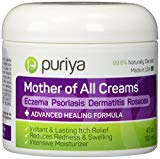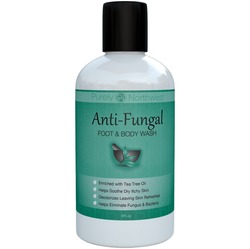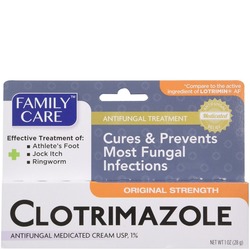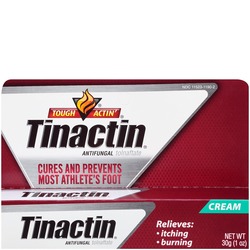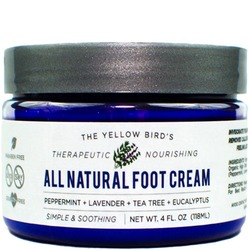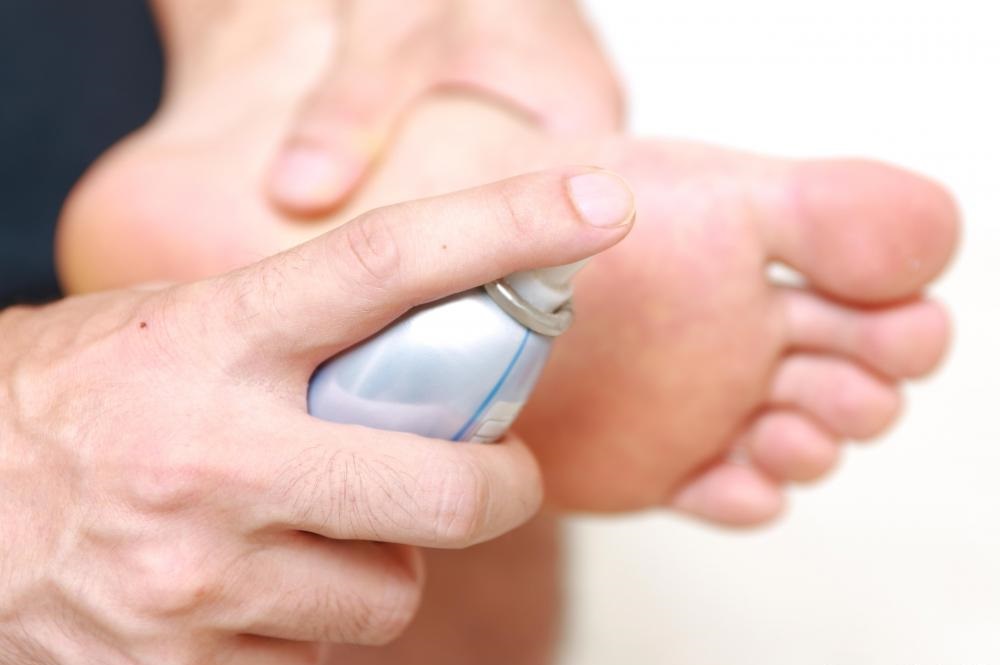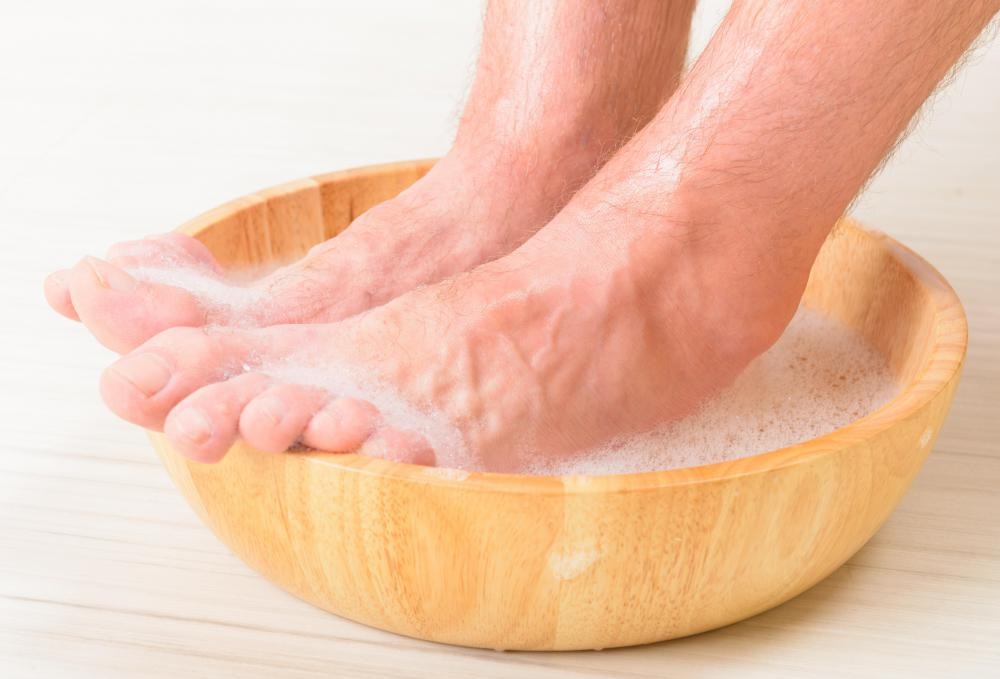Athlete’s foot is a fungal infection that can be contracted in pretty much every location where people are barefoot, such as public swimming pools, gym locker room, and weight room floors. With over 3 million cases reported each year, this is one of the most common infections out there. While it might not be overly serious, it is definitely not a fun infection to have.
Due to its common occurrence, there are a large majority of over-the-counter treatments available from creams to sprays to pills. Some of them work better than others, and some don’t work at all; it really depends on which brand you go with.
Since the effectiveness of these treatments is so varied, we went ahead and did some research ourselves to take some of the guesswork out of it for you. We compared all the top brands and analyzed their unique formulas to see what really worked to cure the infection. If you’re looking for the best Athlete’s foot cream to heal your feet quickly and easily, here are your top choices.
Top Pick: Mother of All Creams by Puriya
The Puriya Mother of All Creams is the cream of the crop in the field of Athlete’s foot care. Why? Because its unique formula covers all possible areas of Athlete’s foot treatment: eliminating the bacteria, healing and repairing the skin, and preventing future breakouts.
While you may have been expecting a cream-like topical ointment, a soap can actually be more effective in day-to-day application. The fact that this formula presents itself as a soap for everyday use, as well as multiple applications throughout the day, makes it a very easy integration into daily life to heal your current Athlete’s foot issue.
In addition to being an easy inclusion to any routine, this wash’s formula works better than anything else on the market. The active ingredients in the treatment are a blend of tea tree oil, peppermint, oregano, jojoba, aloe, eucalyptus and rosemary oil, which presents a very potent combination of agents that fight fungal infections and also some agents that soothe, repair and protect damaged skin. And not only does this soap kill fungus and bacteria and soothe your skin, but it is all-natural and smells great. The peppermint scent is a refreshing change from the often-odd smells that can come from topical ointments and other fungal infection treatments.
All-in-all, this wash is the best athlete’s foot cream because it treats the issue from start to finish and even in the future by preventing future breakouts. You can’t really ask for much more than that. See other users’ feedback on this soap.
Runner Up: Antifungal Soap with Tea Tree Oil by Purely Northwest
Just like our top pick, our runner up is again a soap due to its superior effectiveness. Tea tree oil and a combination of essential oils team up to act as the main antifungal elements in Purely Northwest’s Antifungal Soap, which is similar to the formula in our top pick.
Tea tree oil, as we explain further down in this guide, is an extremely effective antifungal ingredient and is often used on its own to treat Athlete’s foot in homeopathic remedies. This treatment, in addition to being effective, is very gentle, containing aloe vera and a combination of vitamins to soothe the skin and aid in reversing inflammation. The only reason this treatment is the runner up instead of first place is because Premium Nature put just a touch more emphasis on being gentle and fragrant on the skin than Purely Northwest in the production of their Athlete’s foot treatment.
Since the use of treatment isn’t over once the fungus no longer has any visible symptoms, the fact that this treatment is a soap makes preventative action extremely easy. Simply lather some up and scrub down your feet and other previously affected areas during your shower, no sprinkling of antifungal powder that gets everywhere or cream that honestly just feels a bit weird to have in between your toes. Sometimes these specialized soaps containing natural ingredients can be pretty pricey, but this effective Athlete’s foot treatment will run you less than $20.
#3: Clotrimazole Antifungal Cream
Finally, the first actual cream on the list. To battle a fungal infection, first and foremost you need an antifungal agent. Clotrimazole Antifungal Cream is just that, an effective treatment to stop Athlete’s foot in its tracks. This cream is affordable, potent and it has received some rave reviews across various internet marketplaces.
Creams generally contain compounds that make them skin friendly, and application method means that you can really work it into your skin and let it set in to do some healing. Conveniently named after it’s active ingredient, a powerful anti-fungal compound, Clotrimazole is simply a no-frills Athlete’s foot cream that works the way it should. Nothing more, nothing less.
#4: Tinactin Antifungal Cream
For fighting athletes foot, Tinactin Antifungal Cream utilizes the active ingredient of tolnaftate to slow the growth of the fungi. Tolnaftate works by inhibiting the activity of the enzyme that enables the production of ergosterol. We see the term ergosterol when talking about the Clotrimazole cream above as well.
What scientists have figured out is that ergosterol is an essential component of fungal membranes. Without it, they can’t survive. Therefore, medicated creams and antifungal powders ideally want to target ergosterol by slowing growth or destroying it completely. In addition to tolnaftate, Tinactin also contains denatured alcohol, which will help keep your feet dry, as well as butylated hydroxytoluene, which is very useful for its anti-oxidant properties.
Where Tinactin differs compared to our previously rated products is the approach the ingredients take against fighting fungus. Tolnaftate does not initially destroy the fungal membrane, it stops the growth and lets the rest happen on its own. Treatment period is about 4 weeks and the cream should be applied two times a day for optimal benefits. Overall, this cream is great for battling the symptoms of Athlete’s foot, but received a fourth-place rating because doesn’t provide as much in terms of curing it as our top three treatments above.
#5: The Yellow Bird’s All Natural Foot Cream
Last but not least, our fifth best athlete’s foot cream is for the natural healers out there. The formula within The Yellow Bird’s All Natural Foot Cream will keep your feet moisturized, healthy and fungi free. Using a unique blend of essential and natural oils, this all natural foot cream doesn’t just fight fungus, it leaves your feet feeling like you just left the spa!
This cream takes the powerful antifungal properties of coconut oil in combination with tea tree and peppermint oils to provide relief from your feet. Adding shea butter and beeswax allows the foot to heal as well as lock in the essential oils, preventing future flare ups of athletes foot. You can use this as a daily cream as well as a medication to maintain a healthy foot environment and prevent fungus before it has the chance to flourish. I wouldn’t recommend this cream for a bad athletes foot infection, however, I would recommend if you believe you have been infected or want to prevent an infection down the road.
What To Look For In A Good Athlete’s Foot Treatment
Athlete’s foot treatments to pharmaceutical brands are kind of like what whey protein is to supplement brands – everybody’s got one. Many of the core formulas are similar, but there will always be a few outliers here and there that either excel by breaking the mold, or just fall from the mold because they’re not up to snuff. Athlete’s foot treatments may have few or several ingredients, but there are a few core concepts and bases that these treatments should have covered to be effective. Those bases, or bullet points, are as follows:
Antifungal
If you have athlete’s foot, an anti-bacterial soap is a nice thought, but it’s not going to do much against what is strictly a fungal infection. Your athlete’s foot treatment needs to have ingredients that eliminate fungal infection if you’re going to have a good chance of curing yourself in a reasonable amount of time. However, some ingredients can be tough on your skin, so you’ll also need a
Skin-Reliever
Athlete’s foot is EXTREMELY bad for your skin. It creates dryness, cracking, crumbling nails, irritation, itchiness, pain and it tears up your feet and toes (and hands, if it spreads). This is why your Athlete’s foot treatment needs to include some ingredients to bring some relief to your feet and toes. These can include popular ingredients like aloe vera, sea kelp and different combinations of vitamins.
Some of the most effective treatments for Athlete’s foot are creams, which help to soothe the affected area to bring you some much-needed comfort. Skin-soothing ingredients are important for treatments to contain not only to give you comfort for your Athlete’s foot, but to help make treatments gentle enough for everyday use, as powerful antifungal and anti-inflammatory ingredients can wear out the skin if not combined with a reliever.
Anti-Inflammatory
Of course you could just use aspirin to take down the inflammation from Athlete’s foot, but it’s good to have some anti-inflammatory ingredients in the treatment itself so you’re getting some help with swelling at the site of the fungal infection. Vitamin matrixes, aloe vera and several other ingredients can help with inflammation, as well as the pain and itchiness.
Medium
By medium, I don’t mean the size between small and large, I mean the form in which the Athlete’s foot treatment is presented in. Is it a soap, a cream, a liquid spray or a powder spray? Your lifestyle may lend itself more to one kind of treatment than another; after all, you may not get the chance to take your shoes off multiple times a day to apply an Athlete’s foot cream. Sprays are better for being on the go, but they are generally not as effective as other mediums out there.
What Does Athlete’s Foot Do to Your Skin?
Athlete’s foot is first and foremost a fungal infection, meaning that instead of contracting a virus or some other mechanism, it is contracted by contact with the fungus, and the activity of the fungus growing on you. “Alright, but what happens?”, you may be wondering. Well, the specifics on what happens to your skin in response to an Athlete’s foot infection depends on which type of infection you have.
There are 3 main types of infection when dealing with Athlete’s foot. Each type has their own nuances, reactions to treatment and side effects. Identifying which type of infection you have is the first step to creating and executing a strategy for treating your fungal ailment. The different types of Athlete’s foot infections are as follows:
Toe Web Infection
Per the clever name, this infection manifests itself in the webbing of your toes (the skin between them); which, as you can imagine, is extremely uncomfortable since this is a very sensitive area of the foot. Since this area is so sensitive, excessive scratching and rubbing of this area can lead to quite a bit more irritation than other, tougher parts of the foot.
A toe web infection starts with itching, burning and a slight odor. After this goes on for a while, the infection can progress into your skin peeling, turning dry, scaly and cracking. If left untreated, there’s a chance that a bacterial infection could also occur and spread into the lower leg (which is seriously bad news). These types of infections respond very well to treatment.
Moccasin-Type Infection
Moccasin-type infections are a bit tougher to deal with, and definitely more detrimental than toe web infections. These two types of infections are similar in that they both start with itching and discomfort, but the moccasin-type infection spreads to your heel instead of your toe webs and cracks and causes dry skin and discomfort in the skin there. This can be a lot more uncomfortable and painful than toe web infections, particularly because you are putting your weight on that part of your body with every step you take.
These types of infections can also several affect your toenails, which can become brittle and discolored, crumble and even fall out. This type of infection can return if left untreated, and can also affect your hands (moccasin-type infections commonly affect one hand and both feet). These infections are a little trickier with treatment, meaning you’ll have to be more diligent and patient about getting rid of the athlete’s foot completely and make sure to keep up the treatment even after the symptoms disappear so they don’t reappear later on down the line.
Vesicular Infection
Vesicular infections are basically red, painful blisters on your skin. These can be very irritating and pop up on your feet and hands after exposure to the Athlete’s foot fungi. Don’t think of vesicular infections so much as a completely separate type of Athlete’s foot, but more so an accessory that can exist with either of the two previous types but responds to treatment separately.
To explain that a bit, you can have a vesicular infection in conjunction with a toe web infection, and you can treat them both, but the different infections may not go away at the same time. If left untreated, this infection can keep returning indefinitely. Think of it like cooking with wine (odd analogy, but go with it), if you add alcohol to a sauce, you can cook out all of the alcohol; but, just because the alcohol is cooked out doesn’t mean all of the sauce is evaporated and gone.
How To Avoid Athlete’s Foot
Athlete’s foot is spread through contagious fungus. You can get Athlete’s foot by coming into contact with a person who has it’s affected area, directly or indirectly through tile floors, etc. There are a few risk factors that exist outside of avoiding contacting the virus, those are:
• Being a man (males are more at-risk for getting Athlete’s foot)
• Susceptibility to fungal infections (this will show up in medical history)
• A weak immune system due to other illness
• Age (older people get Athlete’s foot more often than younger people)
Outside of those risk factors that you don’t control, there are a few things you can control when preventing Athlete’s foot. First and foremost, try to avoid walking around public restrooms, public swimming pools, weight room floors or locker room floors while barefoot. Those are hotbeds for the Athlete’s foot fungus due to being damp or humid (the perfect breeding ground for the fungus).
If you’re going to be in these environments, invest in a cheap pair of shower shoes. Shower shoes might seem dorky at first, but they’ll stave off fungal infection and keep your feet healthy and able to fight on. Another risk factor you can avoid is shoes with poor ventilation.
Shoes that allow your feet to breathe and get some air circulation mainly serve the purpose of keeping your feet dry, which is a direct combatant of fungal infection. Also, if you have naturally sweaty feet, consider bringing a pair of socks with you during the day for you to change into.
Wearing damp socks all the time significantly increases your chances of a fungal infection forming, which is actually what led to a lot of grief in the Vietnam War. Trenchfoot is a classic military condition, and it is characterized as a fungal infection caused by the feet being constantly wet.
Natural Remedies To Cure Athlete’s Foot
As with most ailments, there are several homeopathic remedies for athlete’s foot that can lend a helping hand until you can make it to the store to pick up an over-the-counter alternative with a bit more healing power. Here are a few of them:
Tea Tree Oil
Adding tea tree oil to a warm-water footbath, soaking your feet, then drying completely can help to destroy the fungus on your feet and keep it from spreading out to unaffected areas. In fact, tea tree oil is one of the active ingredients in several over-the-counter Athlete’s foot treatments.
Himalayan Crystal Salt and Apple Cider Vinegar
Adding 2 tablespoons of Himalayan crystal salt and ½ cup apple cider vinegar to some warm water, soaking your feet in the solution, then drying after can help fight the infection by creating an environment that is extremely acidic, and thus detrimental to the fungus. You can also keep this solution bottled up and wipe down your feet with it every once in a while to speed up the healing process and the elimination of the fungal infection.
Raw Virgin Coconut Oil
In addition to the several other benefits of coconut oil, it has antifungal properties, which means that wiping your feet down with coconut oil a few times a day can help fight Athlete’s foot, and also prevent future outbreaks. You can also cook with it!
Ginger
Ginger is a pretty-strong antifungal, and you can make an applicable/useful solution out of ginger by simply chopping and boiling it in water for about 20 minutes. You can take the resulting mixture and apply it daily to combat the infection and the odor. Remember to make a fresh batch of this each time instead of re-using so you’re sure you’re using a fungus treatment without any fungus in it.
Preventative Care
Whether you have previously had Athlete’s foot or not, there are some preventative measures you can take to prevent a fungal infection on your feet and all of the pain, dryness and itchiness that comes with it. Other than the common sense preventative measure of wearing shower shoes in public areas where people walk with bare feet, there are a few other methods you may not know of to help keep your feet dry and fungus free.
First, don’t be afraid or embarrassed to make use of different powders to keep your feet dry during the day. Talcum powder, Gold Bond powder and baking powder are all popular options to help prevent moisture from accumulating on your feet and between your toes while you’re at work and running errands. Moisture is what creates a breeding ground for fungal infections, so keeping your feet dry is extremely important in fighting and preventing Athlete’s foot.
Next, and this is a big one, dry your groin before you dry your feet if you either have Athlete’s foot, have had Athlete’s foot, or have recently been in an environment where the contaminents could be present (locker room, public pool, etc.) If you transfer the fungus to your groin, you could develop jock itch, which is a whole other beast (and a more unpleasant one than Athlete’s foot, at that). This is a simple measure to take that can prevent a lot of grief.
Lastly, allow your shoes to air out for at least 24 hours before wearing them again. Even if you’re using powders on your feet, some extra moisture might be harbored in your shoes if you walked through a puddle the night before, or if you had a particularly sweaty time down in the footbed. Airing out your shoes will ensure that they’re dry before putting them back on, and thus staying away from environments conducive to fungal infection.
Final Thoughts
Athlete’s foot is a pretty nasty affliction. It makes your feet hurt, it makes them dry, it makes them itch and it looks and smells almost as bad as it feels. There are several over-the-counter treatments on the market, but not all of them are extremely effective. Keep this buyer’s guide and our top 5 best Athlete’s foot treatments in mind when you’re shopping for a treatment of your own.
If you don’t end up picking one of our top 5, remember what we said about each featured treatment as a starting point. Take note of the pro’s, con’s, likes and dislikes about each. Also keep in mind any allergies you may have, adding an allergic reaction to your Athlete’s foot is a recipe for some serious discomfort.
With regular treatment with an effective over-the-counter or prescription compound and some simple preventative action after the fact, you’ll be able to keep your feet healthy and fungus free for the long run.

